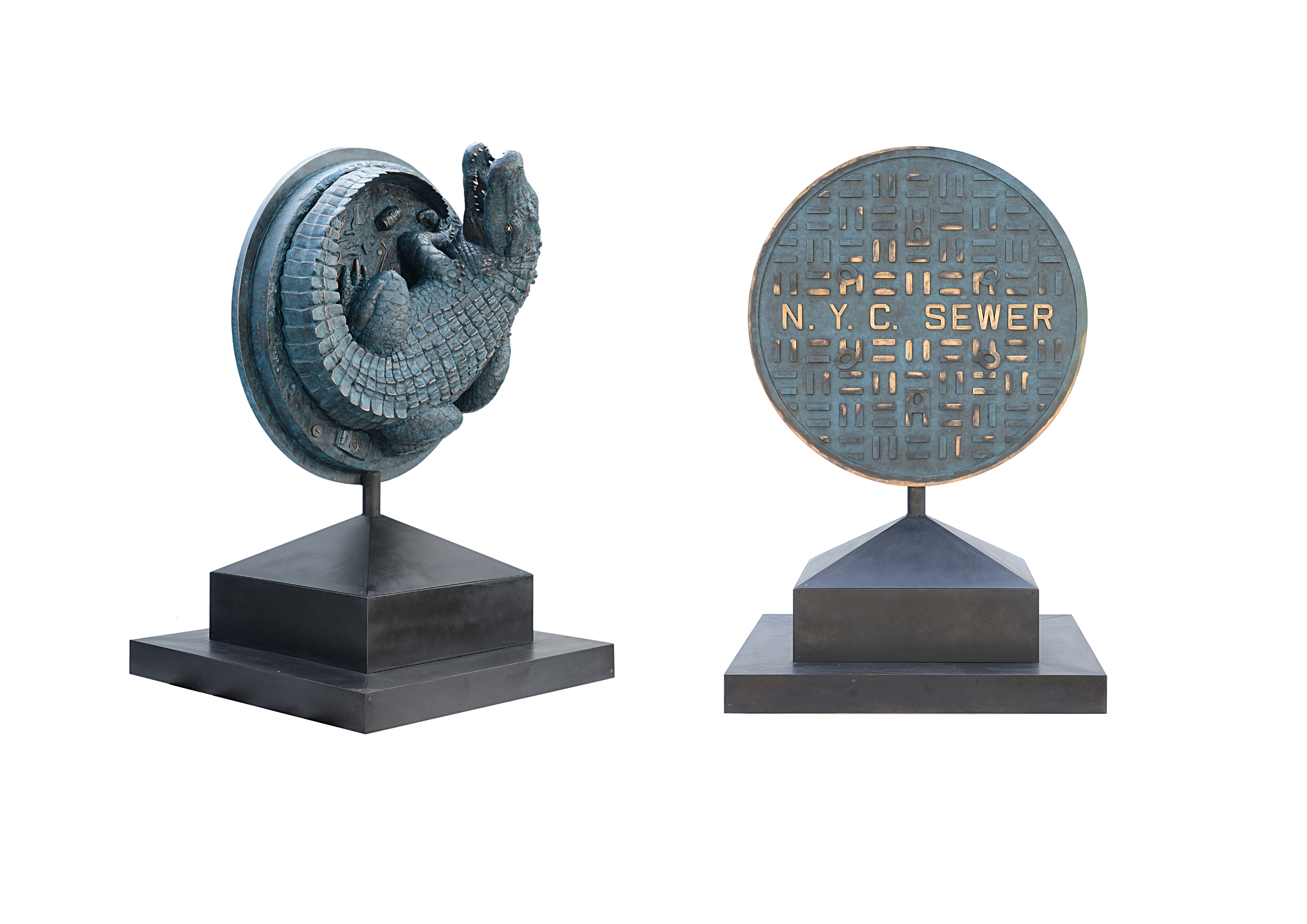THE SCULPTURE
With their armor of scales and ability to regrow limbs, alligators are a symbol for survival
across many ancient mythologies. Yet their story also has a home in modern New York, where
what started in the late 1920s as a practice of importing baby alligators from Louisiana and
Florida quickly transformed into tales of rogue underground monsters that have spanned the
rise and fall of stock markets, neighborhoods, and culture shifts.
The metaphor
is not surprising: alligators, like New Yorkers, are built to survive in the extreme. In this
century alone, New Yorkers have lived through terrorist attacks, financial crashes, blackouts,
and a pandemic. When other cities have depopulated, New Yorkers have stayed and thrived, their
skin thick and their senses attuned as they move between the subway and the sidewalk.
Drawing on the century-old urban legend of New York sewer alligators, NYC Legend puts a modern
spin on the process by which myth becomes art with a tribute to the greatest city in the world.
It is also a testament to our timeless drive to find icons in nature, and to the bridge that myth
builds between the ancient and modern that still echoes today.
Sculpture is an
impactful medium for symbolism because the experience is tactile and offers the opportunity to
discover a composition from all angles. Bronze lasts for millennia, so when used in sculpture
it acts as a time capsule from the past and the symbols carved become a way to ask what story
we want to tell future generations. When they look at what we leave behind, what do we want
them to see? How do we want to explain ourselves? Nobody can know how our actions will be
remembered, but our most durable artifacts will remain. The catch of course is that we have no
way to predict how our symbols might translate and what new stories they will invite when the
whole world has changed.
New York is no stranger to symbols in the form of urban monsters. Be they radioactive beasts or
apes the size of the Empire State Building, we see ourselves in their grit.
Of
all of these, the alligator is the monster closest to our real world, the only one to enter
our lived experience (as recently as 2023, when a 4 ft alligator inexplicably appeared in
Brooklyn). Repeated decade after decade, its story parallels the staying power of its city.
The objects that appear alongside the alligator are all representations of this
exact moment in time, and often its precariousness. A simple quarter will soon be a relic of a
cashless society, a plastic straw has shifted from an object of convenience to a sign of
waste, and fast food and an aluminum can are familiar to us all in their unnaturalness.
On the lower end of the sculpture, there’s a container for a COVID test, a vestige
of what we have recently overcome. The container’s printed biohazard symbol also ties to other
stories we tell—from nuclear power to medical labs.

N.Y.C. Legend is Alexander Klingspor’s first monumental bronze sculpture in collaboration with
Mollbrinks. It was cast at the renowned Perseo Foundry, with a smaller version shown at the
2022 London Art Fair. It is on display in Union Square, NYC between October 2023 and June 2024
through NYC Parks Art In The Parks Program and Union Square Partnership.
"Alexander Klingspor's striking bronze sculpture, NYC Legend, joins the impressive
collection of iconic public sculptures proudly on display throughout New York City. Its
placement in Union Square, one of Manhattan's most prominent and bustling locations, for a
period of eight months allows for widespread and meaningful engagement with the public. We
take great pride in showcasing Klingspor's masterpiece and are hopeful for its permanent
installation following the exhibition period." — Joseph Douek, NYC Planning Commissioner
Title: NYC Legend
Monumental Edition: 3
Medium: Bronze cast sculpture and bronze base, internal steel beam support.
Dimensions: H:225 cm x W:150 cm x D:150 cm.
Total weight ca 900 kg. Sculpture weight ca 600 kg, Base weight ca 300 kg